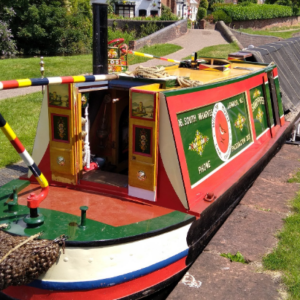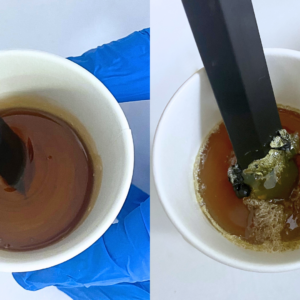WEST SYSTEM: How Did a Dentist Become a Woodworker?
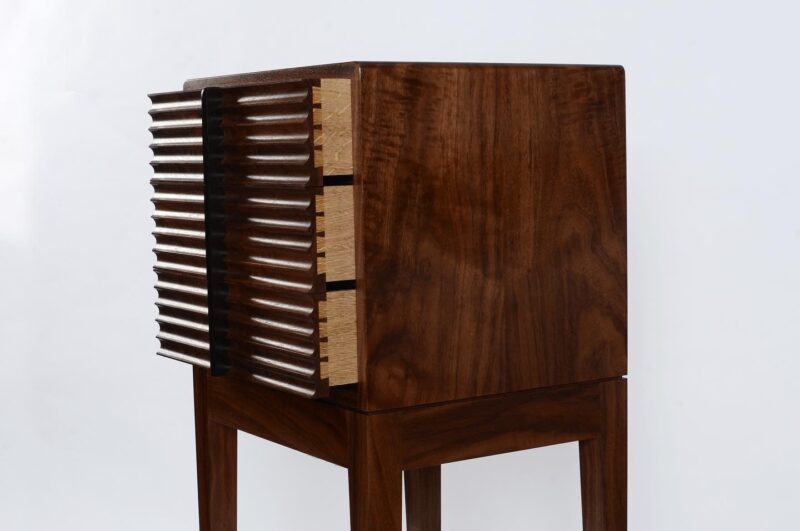
I spent over thirty years practising as a dentist and harboured a constant fascination for crafting wooden furniture and home accessories. My skills in woodworking were entirely self-acquired, leading to a certain unpredictability in the quality of my creations.
In 2021, I chose early retirement and undertook a year-long designer/maker course at the esteemed Waters and Acland Furniture School in the Lake District. Throughout this year, I acquired not only the art of fine furniture but also mastered the use of woodworking machines. Additionally, I cultivated the patience and dedication essential for creating truly extraordinary pieces. This transformation marked a profound shift from my previous status as a hobbyist to that of a skilled furniture designer/maker.
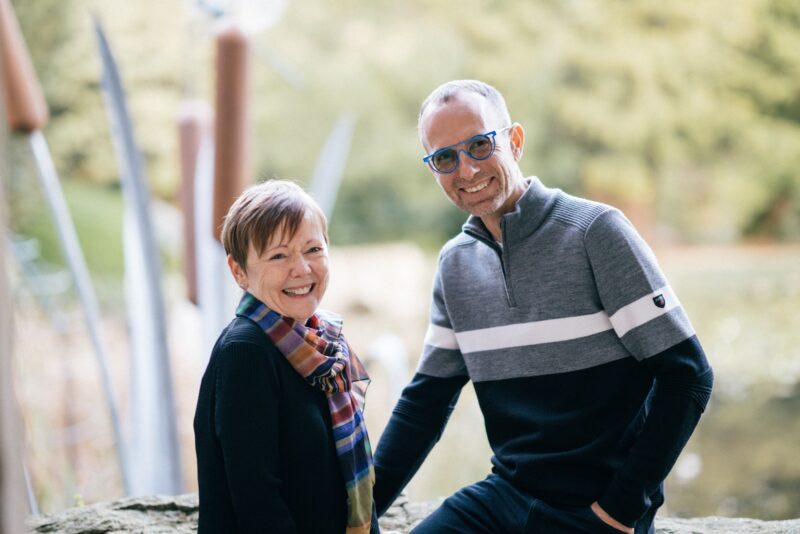
In collaboration with my wife, Deborah, we have founded Tree of Life Creations LLP to showcase our respective areas of expertise. Subsequent to her retirement from the field of dentistry, Deborah possesses a professional patisserie certificate from Leith’s Cookery School in London. Her proficiency is evidenced in the artful creation of exceptional pastries and tailor-made celebration cakes. Meanwhile, my dedication lies in curating a varied portfolio of high-quality furniture and custom-made pieces.
During my residence at Waters and Acland, I undertook projects that provided valuable exposure to a diverse range of furniture-making techniques. Additionally, they tasked me with conceiving and designing my own projects to be executed within the educational institution.
I assiduously crafted a significant project, a chest with three drawers mounted on a stand, from American black walnut. Notably, I incorporated a sentimental element into this piece by using a precious piece of ebony for the drawer handles, a meaningful inheritance from my late father.
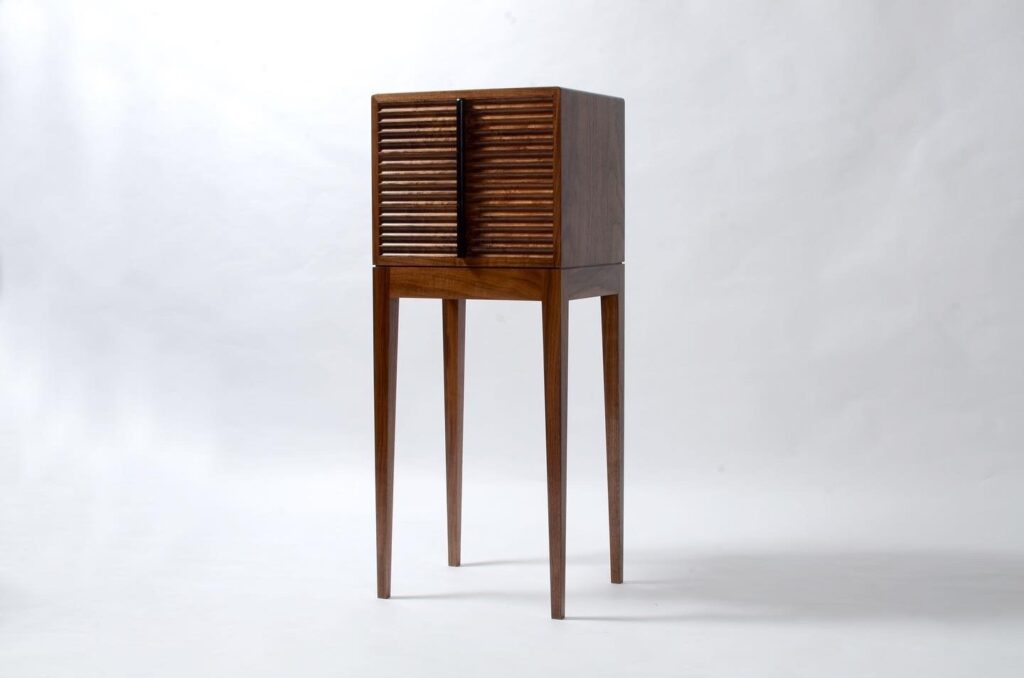
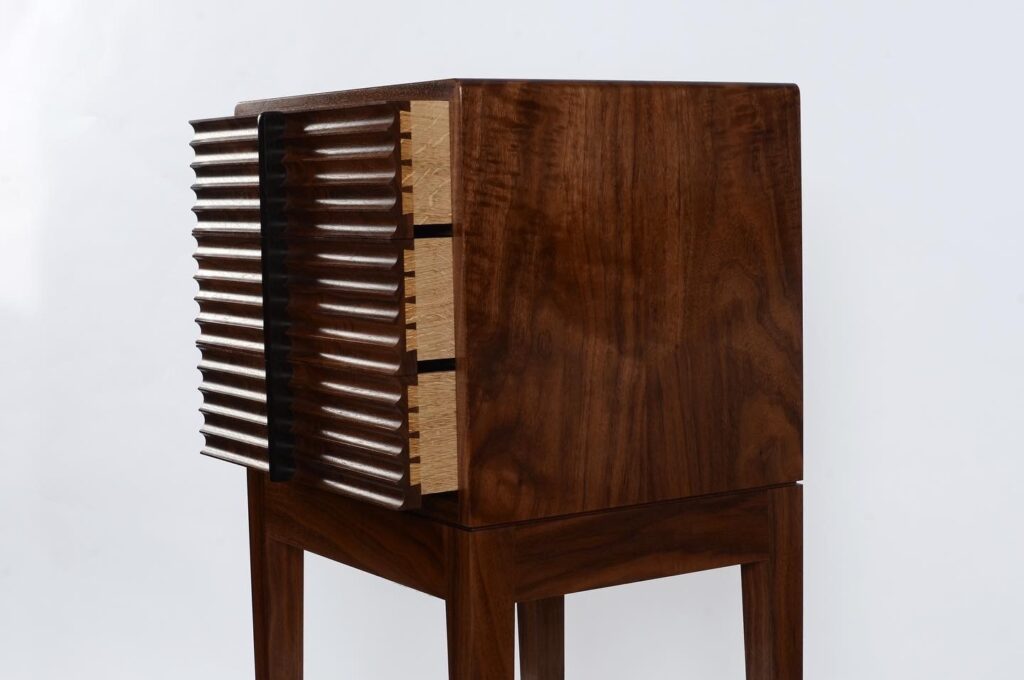

For my second project, I produced a circular dining table from American black walnut with intricate ebony detailing. This marked my introduction to the use of WEST SYSTEM® Epoxy, a material frequently employed in the school’s woodworking curriculum.
The process involved securely bonding top veneers to an MDF substrate using filled WEST SYSTEM Epoxy. Filled epoxy being a combination of the 105 Epoxy Resin® and 205 Fast Hardener®. We would then incorporate WEST SYSTEM 403 Microfibres Adhesives Filler into the mixture.
Afterwards, we subjected the assembly to a curing process under pressure in a vacuum bag. This was to ensure the formation of an exceptionally strong and long-lasting bond.
We constructed the table’s apron using epoxy-bonded plywood. We then expertly shaped over a former and placed within a vacuum bag for precision. Additionally, we affixed the table’s legs using threaded steel rods and WEST SYSTEM Epoxy. Finally, we applied the walnut apron using filled epoxy to ensure a strong bond and maintain adhesive uniformity.
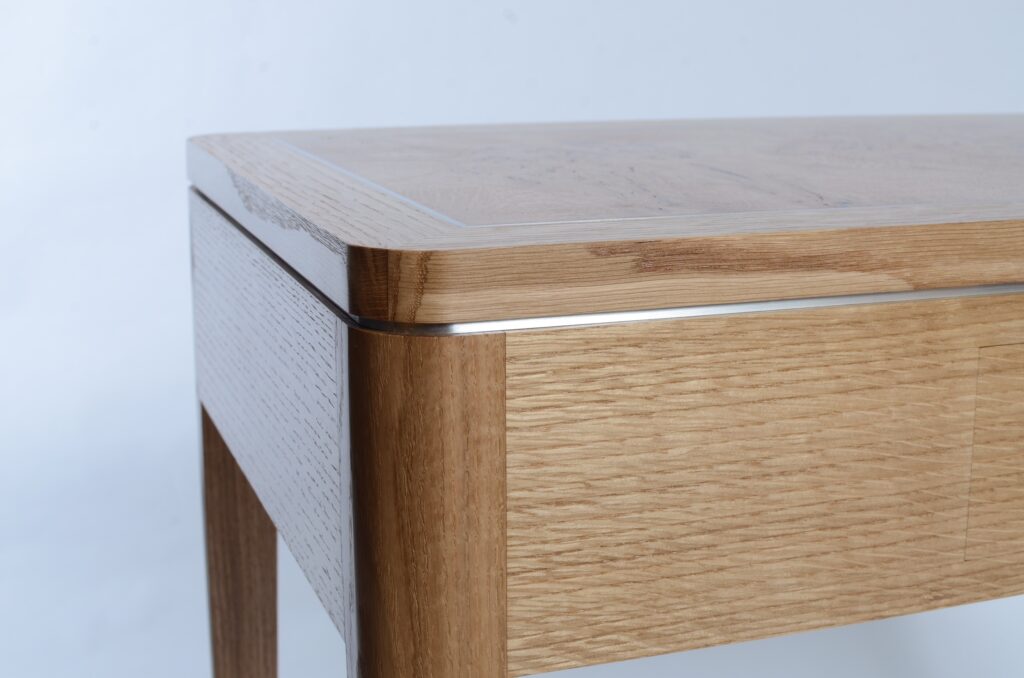
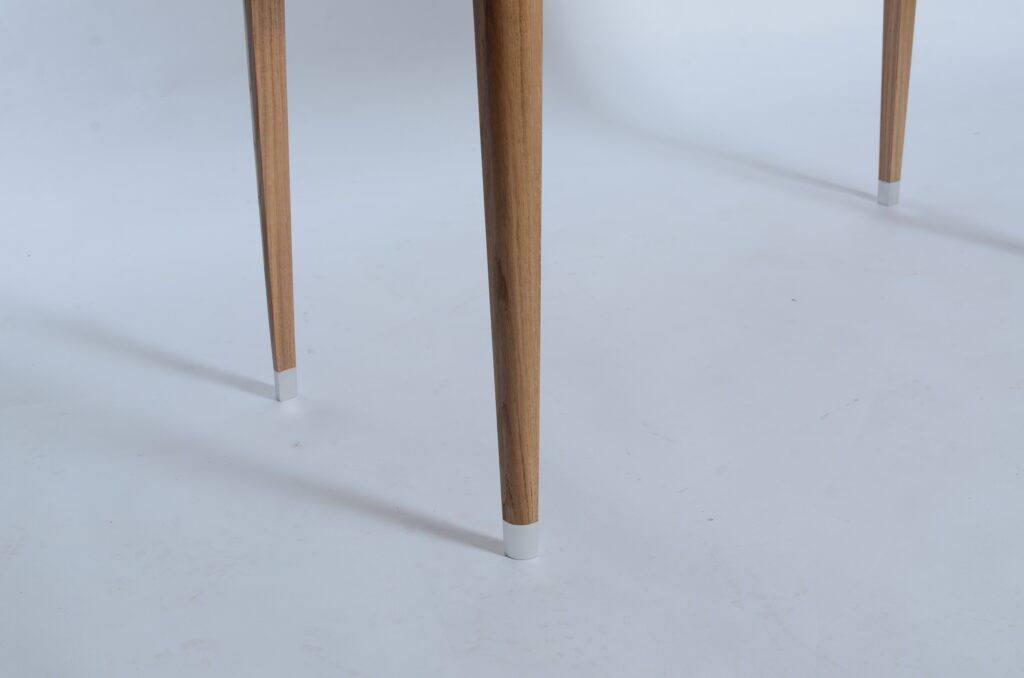
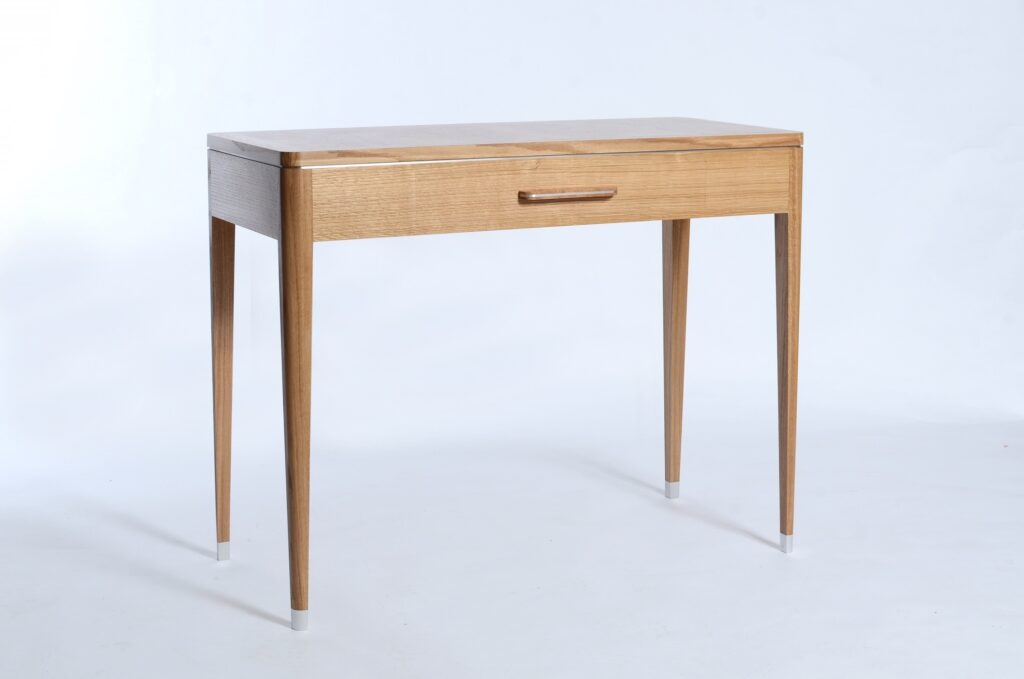

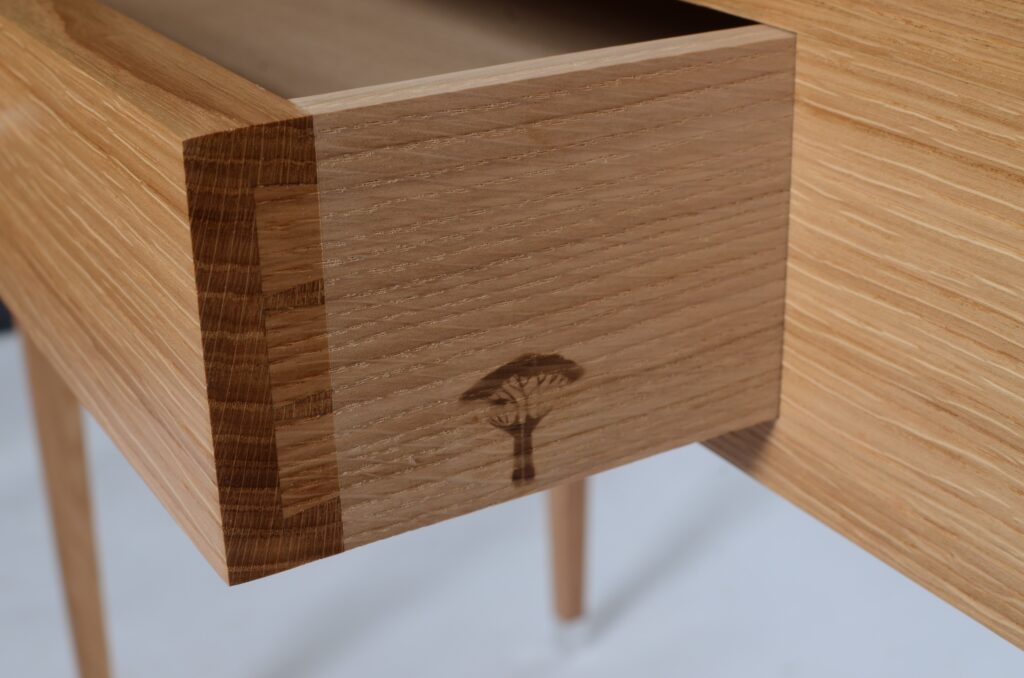
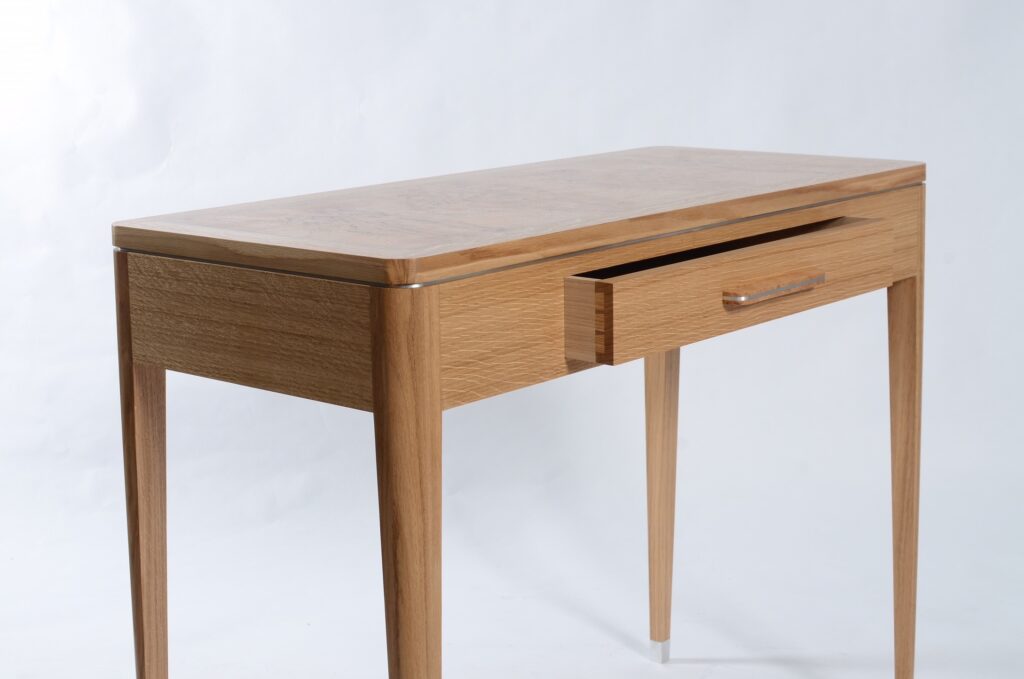
My culminating project at Waters and Acland entailed the manufacturing of an oak dressing table. This featured a burr oak veneered top, adorned with aluminium accents. In this project, we bonded the top veneers to an MDF core, using WEST SYSTEM Epoxy. Afterwards, we augmented it with filler and pigment to address any imperfections in the burr oak surface.
Click here for video of the glue up using epoxy…
For any imperfections that weren’t entirely filled, we judiciously applied pigmented epoxy. Furthermore, we also glued the oak lipping for the top using WEST SYSTEM Epoxy. This was not only to establish a strong bond with the MDF but also to extend the available working time. Thereby, ensuring precision in all the mitres. We likewise bonded the aluminium details on the tabletop and drawer handle using WEST SYSTEM Epoxy. We exercised special care during the sanding process to prevent the generation of excess heat in the metal. This is because it could potentially cause the epoxy to soften.

After parting ways with Waters and Acland, I proceeded to sell the aforementioned piece. Following this sale, the client expressed a desire for a pair of coordinating bedside tables. I crafted these in a manner akin to my previous work, albeit in the confines of my personal workshop. Given the successful track record I had with WEST SYSTEM Epoxy in previous projects, I saw no compelling reason to switch to an alternative brand and consequently procured my own supply.
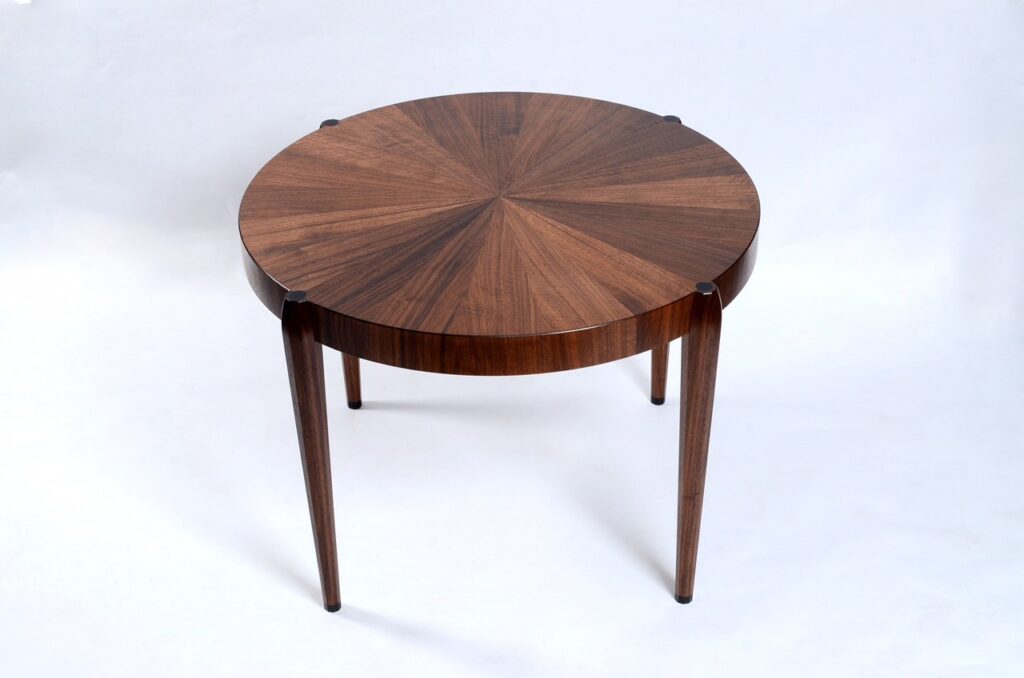
I have procured timber from several suppliers, including British Hardwoods in Keighley, Duffield Timber in Ripon, and Whitmores Timber in Leicestershire. American black walnut has been my timber of choice. I have used it for numerous projects due to its appealing warmth and rich colour, which it imparts to furniture. Additionally, I hold European oak in high regard for its ability to exhibit exquisite grain patterns and maintain a classic aesthetic.
The furniture I’ve produced is a result of both machine work and handwork. While modern machinery is undeniably efficient, the use of hand tools is immensely gratifying and contributes to the creation of outstanding results. I consider them indispensable in my work.
In my workshop, I have a Hammer B3 winner Comfort saw/spindle moulder and a Hammer A3-41 planer thicknesser. These were carefully selected after thorough research to ensure their quality. The fact that they were on special offer at the time was an added bonus. Additionally, during the 2020 lockdown, I acquired a Jet 2 hp cyclone dust extractor and pillar drill from Axminster. These were showroom models, obtained at a very favourable price.
I’ve also invested in a variety of Festool power tools. This includes sanders, a router, jigsaw, mitre saw, and a domino machine. The esteemed quality and reputation of Festool were the driving factors behind these purchases. Furthermore, my collection of hand tools is quite extensive and comprises several Lie Nielsen and Veritas planes and chisels, Rob Cosman saws, Japanese saws, Ashley Iles chisels, and other top-notch tools for marking and measuring. I’ve striven to acquire the highest calibre tools within my budget. This is with the expectation that they will deliver many years of dependable service. To aid in veneering, I recently added an AirPress Pro Plus portable vacuum bag system to my toolkit, and it has proven to be outstanding.
When it comes to adhesives and finishes, I employ a diverse range of products. In situations requiring specialised adhesion, such as veneer bonding, metal-to-wood joints, or when an extended working time is needed, my go-to choice is the WEST SYSTEM 105 epoxy with 206 hardener as well as the WEST SYSTEM 406 colloidal silica.
Up to this point, I have not encountered any disadvantages or concerns when employing WEST SYSTEM Epoxy. The complete curing period is quite extensive, but I typically undertake bonding procedures toward the conclusion of the day and allow the substance to cure overnight, especially when employing a vacuum bag. One piece of advice I would offer to those who are utilising WEST SYSTEM Epoxy for the first time as an adhesive, is to strive to eliminate as much surplus material when joining pieces together. I use undyed methylated spirit for this purpose. This recommendation serves a dual purpose: firstly, the epoxy solidifies very robustly, and secondly, it is simpler to sand down, resulting in a lesser impact on the final finish.
My most recent projects involved crafting two armchairs from American Black Walnut, featuring intricate maple and aluminium details. To achieve the desired results, I relied on WEST SYSTEM Epoxy for bonding the veneers on the chair backs and for securely joining the arm structures to the base and rear portions. This adhesive proved essential due to the intricate nature of the assembly, requiring a more extended working time.
Additionally, I recently completed a cribbage board made from maple and burr oak. The assembly and filling process closely resembled that of the dressing and side tables, utilising pigmented WEST SYSTEM Epoxy.
Presently, I am in the design phase of a jewellery cabinet project. We will adorn the cabinet with veneers of Black Birdseye Maple. Simultaneously, I am conceptualising a dining table, contemplating the use of either oak or maple for the primary structure, with a veneered top to add a touch of elegance.
Have you subscribed to our FREE monthly newsletter? Sign up here!
Working on a project? Share it with us! Click here…

